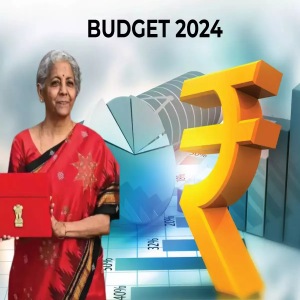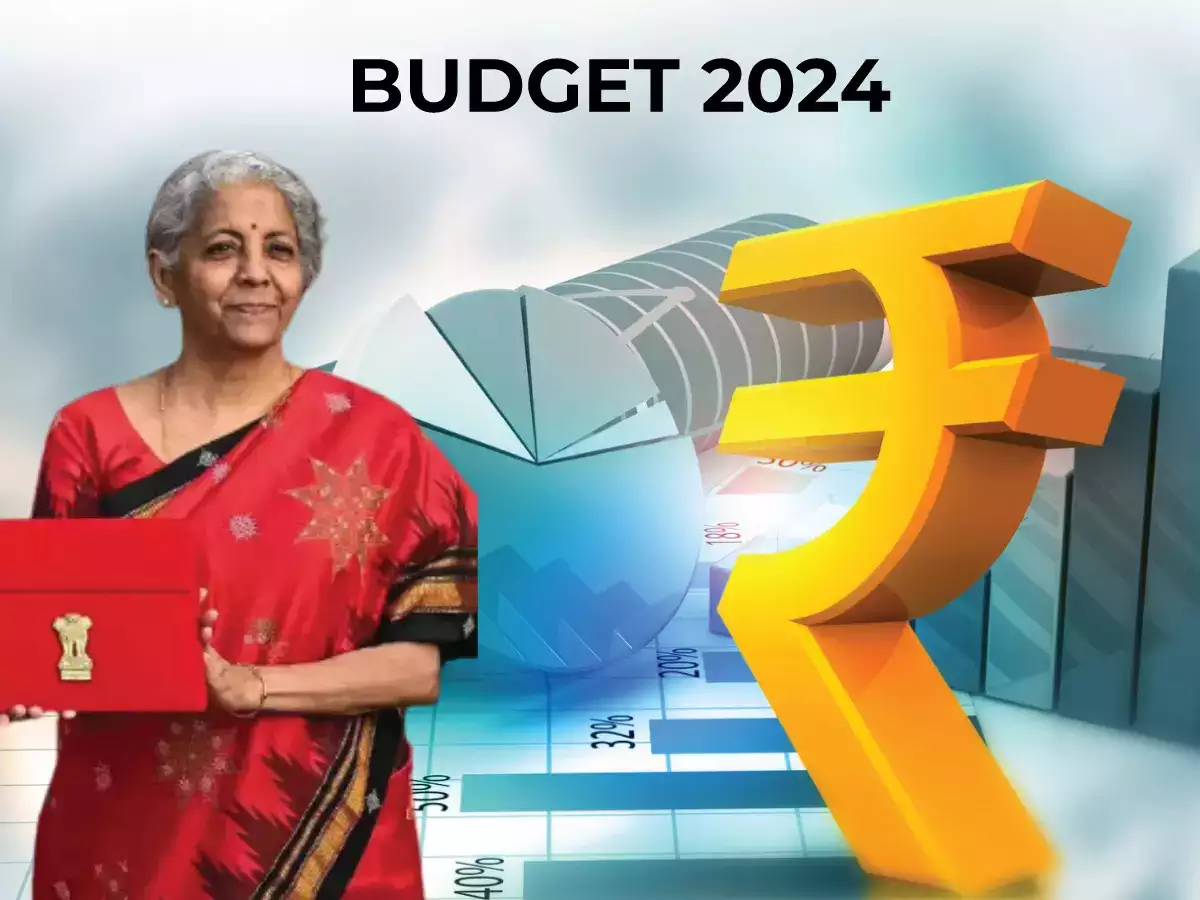
.jpg) Prakash Louis
Prakash Louis

The Budget presented on July 23, 2024, in the Parliament brings in some hopeful pointers. Some of the positive steps are: Under the Ministry of Railways, three major economic railway corridor programs will be implemented. These are (i) energy, mineral and cement corridors, (ii) port connectivity corridors and (iii) high-traffic density corridors. Forty thousand normal railway coaches will be upgraded to Vande Bharat standards to ensure passenger safety and comfort. Under Housing, an additional two crore houses will be built over the next five years under Pradhan Mantri Awas Yojana-Grameen. A new scheme will be launched to help sections of the middle class living in rented houses, slums, and unauthorised colonies to buy or build their own houses. Rooftop solarisation of one crore households will be taken up under the energy sector.
Public and private investment will be promoted in post-harvest activities, including aggregation, storage, supply chain, processing and marketing. The application of the Nano DAP fertiliser will be expanded to all agro-climatic zones. A programme for supporting dairy farmers will be formulated. PM Matsya Sampada Yojana will be expanded. Adoption of E-buses for public transport will be encouraged. The Budget promises to focus on employment, skilling, MSMEs, and the middle class. It also referenced the Prime Minister's 5 schemes and initiatives to facilitate employment, skilling and other opportunities for 4.1 crore youth over 5 years with a central outlay of 2 lakh crore rupees. What is very consoling is that the Budget makes a provision of 1.48 lakh crores for education, employment and skilling.
A budget announcement always generates acclaim and praise on one hand and criticism on the other. Expectedly, the ruling coalition highly acclaimed the Budget. But the opposition, on the other hand, decried it. Though lots of sops are offered for the poor and the vulnerable population, in reality, the Budget appears to be an urban, upper-caste budget. This year's Budget appears to establish that it leads us to Bharat, the BJP's corrupt location.
But what more can be expected from a corrupt, casteist, communal, criminal, and cruel regime which is a stooge in the hands of corporates. At face value, it can throw some bones to the poor and the vulnerable population of India. Its very nature is anti-citizens and anti-poor and pro-market and pro-corporates. Forget about Muslims or Christians, whom the present regime continues demonising, but over 60% of the population within the Hindu-fold figure nowhere in the Budget.
Deepanshu Mohan of the Centre for New Economics Studies, writing in The Wire on July 26, 2024, observes that the finance minister in the Union Budget 2024, after years of apathetic neglect and macroeconomic policy indifference meted to critical government voices, implicitly acknowledged the nature of structural gaps observed in India's 'jobless growth' trajectory, which has continuously observed a higher output-employment gap, and a weakening trend in macro-labour productivity levels. The Narendra Modi government has remained more focused on countering critical voices or sending Directorate of Enforcement officials to spread 'fear' and 'punishment' than addressing the reasons that humbled the Bharatiya Janata Party (BJP) during the recent polls.
Going further, Deepanshu argues that in a democratic republic, such an electorally sound feedback information system, where voters clearly 'tell' the government 'what to prioritise' may be well received and is to be celebrated. However, to what extent serious intellectual prowess exists in the government's policy-making knowledge system, or in its 'intent' and capability attached to addressing the issues at hand when it promises to do so, requires some critical reflection and soul-searching. The issue here is not so much about 'intent' but about policy and its application — whether the consequential links to applied policy are consistent (or convergent) with their intended goals.
In its report, The International Labour Organisation pointed out the worrying fact of unemployment in India. It reported that youth comprised 82.9% of India's unemployed population in 2022. The report goes on to prove that unemployment in India is predominantly a problem among youths, especially young people with a secondary or higher level of education, and it has intensified over time. The report also revealed the shocking facts that the share of educated youths among all unemployed people increased 11.5% from 54.2% in 2000 to 65.7% in 2022. Among the educated (secondary level or higher) unemployed youths, women accounted for a larger share (76.7%) than men (62.2%). The report titled, 'India Out of Work' also highlights the gender, rural-urban disparity in employment.
Both economists and conscious citizens are raising fundamental questions regarding the popular announcement regarding employment and the preparedness for the implementation of its own resolve. They point to the fact that it is difficult to ascertain whether the current government, despite its prospective pitch for creating 'jobs', is actually aware of the complex problems at hand — such as high youth unemployment, high informality, deep structural underemployment, and widening rural-urban disparity in employment patterns — visible across a disjointed, asymmetric labour market.
What is more intriguing is that the much-publicised programs of the present regime, which are projected to be different from previous governments, never assessed its policies and programs on employment creation as in other areas. For instance, the Ministry of Skill Development and Entrepreneurship (MSDE), established in 2014, absorbed the National Skill Development Corporation (NSDC) and other programmes with the ambitious goal of training 300 million people by 2024. However, despite partnering with various organisations and raising awareness, these programmes have not been as effective as envisioned. Neither has any assessment worth its name been undertaken to learn from the successes and failures and revamp this intention.
Writing for the Wire on July 23, 2024, Arun Kumar believes that the Budget 2024-25 shows that the Modi govt has learnt no lessons from the Lok Sabha polls. The lesson for the BJP, according to Arun Kumar, is that it did not get a majority because the issues of inflation, unemployment and dissatisfaction of farmers and the youth were important. So, the vote can be read as being against the policies of the BJP government. The government has responded by announcing many things to address these issues. The FM has announced nine priority areas for achieving 'Viksit Bharat', a developed India.
If one reviews the priorities spelt out in the Budget, the first among the priorities listed is agriculture, for which 1.52 lakh crore rupees has been announced. But this is only 8.6% above last year's expenditure and 4% above the allocation in the interim Budget. Adjusting for inflation, it is hardly any increase. Further, the farmers in the last 3 years have been demanding a Minimum Support Price (MSP). But this government has turned a blind ear to this just demand of the kisans.
The next priorities listed are employment and skill-building. For this, many schemes have been listed, such as apprenticeships, internships, and so on. That is a good direction to traverse, but unless jobs are created, the young, after getting trained, may remain unemployed. For job creation, there is a need to encourage labour-intensive areas instead of capital-intensive ones. However, allocation to MGNREGS has not been increased, so in actual terms, it is going to be less than last year. Hence, this goes to state that there has not been any change in the policies and programs of the BJP government, irrespective of talking about a viksit Bharat.
Generally, new schemes are also announced in the Budget. Rupees 70,449 crore were allocated to the Department of Economic Affairs for New Schemes. The allocation is for capital expenditure and accounts for 7.5% of the total capital outlay. But what is interesting is that there are no details available about these schemes, such as for whom they are, for what they are, etc. As usual, this amount will also be used for some purpose that the BJP has in mind.
One of the promises made in the Budget was allocating resources to upgrade trains to Vande Bharat standards to ensure passenger safety and comfort. This is very assuring. But the question is, which trains would be upgraded? Where would these trains run from? Who would be the passengers on these trains? What would the ticket fares be on these trains? Would these trains be run by the Railway Ministry of the Government of India or by Adani and his company?
It is possible that much of this money would be spent on improving the trains in Mumbai town. Hence, the Maharashtra government has been promised Rs. 15,900 crore allocation for railway projects. Surely, the Maharashtra government would get this amount and even more since the government there is a coalition government. However, what this huge amount of taxpayers' money would be spent on is not clear. The big promise of upgrading the trains to Vande Bharat standard is a farce. Since the Vande Bharat trains themselves were found to be leaking from the roof.
The Indian Express, commenting on the Budget in its July 25, 2024 edition, quoted the opposition saying that this was a 'Budget bonanza for Andhra and Bihar'. The opposition said that the Budget was designed to save the coalition so that Nitish Kumar and Chandrababu Naidu would not rock the boat. It was reported that the RSP MP NK Premachandran criticised the selective allocation of projects, stating, "There has been total discrimination against some states. Bihar and Andhra Pradesh have been allocated so many projects. In a parliamentary democracy, giving a boost to some states which are giving support to govt is against the spirit of the Constitution."
On the other hand, it was reported that Chandrababu Naidu seemed to have declared that Andhra Pradesh had won. Thanking both Modi and Sitharaman, he said, "I thank (them) for recognising the needs of our state and focusing on a Capital, Polavaram, industrial nodes and development of backward areas in AP in the Union budget of FY 24-25. This support from the Centre will go a long way towards rebuilding Andhra Pradesh. I congratulate you on the presentation of this progressive and confidence-boosting Budget."
Similarly, Bihar gets a lion's share of Rs. 58,900 crores in the 2024 Union Budget. This is the reward Nitish Kumar gets for joining the NDA coalition government. But the question remains unanswered: for which purpose would this money be spent in Bihar? The public has not forgotten that in 15 days, 10 bridges collapsed, resulting in the loss of crores of rupees. The officials, the minister of bridge construction, and Nitish Kumar, the chief minister, should have been booked for this colossal waste of public money. If Nitish blames Laloo Yadav for a ghotale ki sarkar, Nitish is overseeing a ghotale and ghoshna ki sarkar.
If you look at the Union budget 2024 as a jumla for which Modi and BJP are known, it is high on rhetoric and low on implementation. Some claim that the Union Budget 2024-25 is committed to strengthening the GYAN model to empower the 'Garib' (poor), 'Yuva' (youth), 'Annadata' (farmer), and 'Nari' (women). It has outlined a comprehensive strategy for a 'Viksit Bharat' aimed at economic growth, social welfare, and sustainable development. But in reality, it will further discriminate, marginalise and pauperise the poor, the youth, the farmer and the women. These are left to fend for themselves in a democratic, socialist, secular republic.